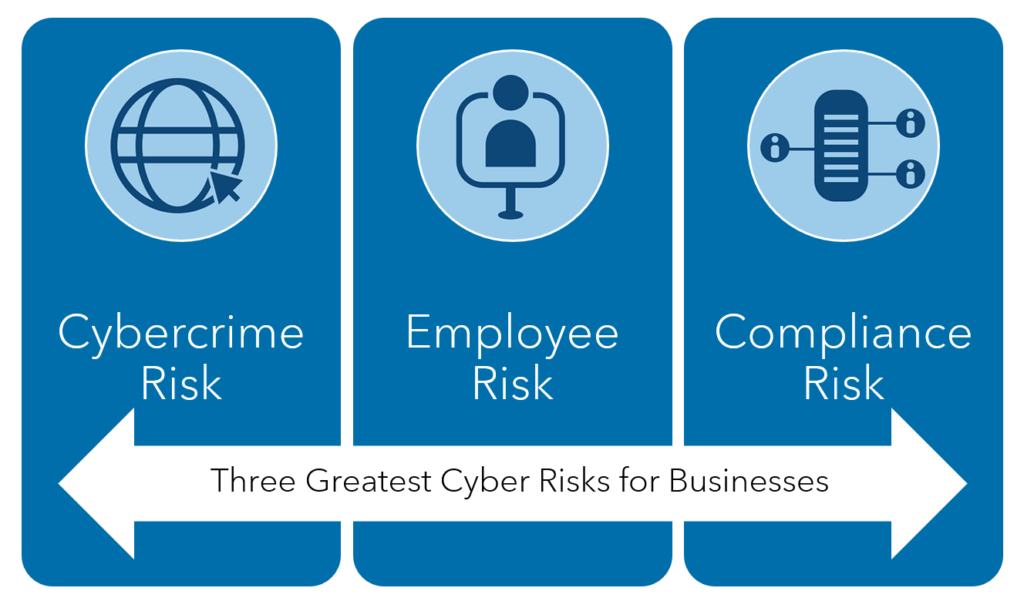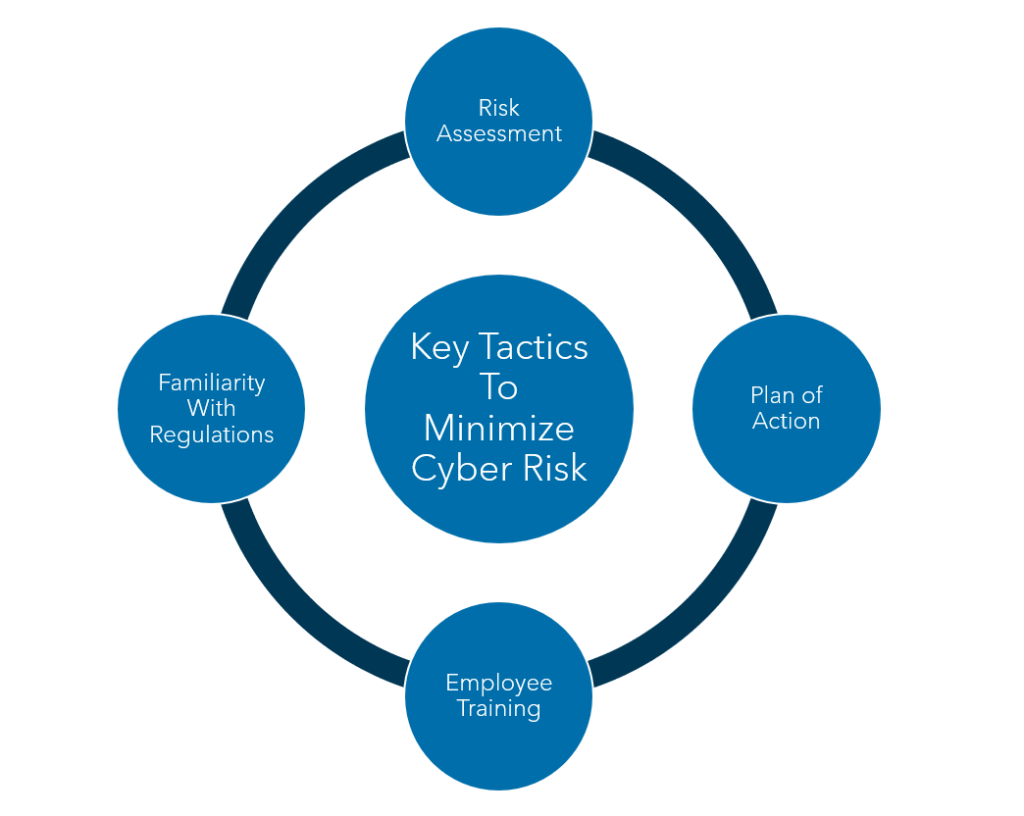The Biggest Cyber Risks for Your Company and How to Manage Them

Rapidly advancing technology and the need for security produce unique risks for the businesses of today.
You can protect your organization from threats by knowing the most common cyber risks and how you can prepare your company to meet each of them head on.

Cybercrime and Cyberattack Risk
The most obvious cyber risks are those malicious attempts to exploit your data from outside your organization. The effects of any cyberattack can be debilitating for a business, but not all cybercrime tactics look the same.
As technology has progressed, the variety of cyber schemes has too, and there are many different types of attack methods that cybercriminals employ, such as phishing, ransomware, fileless attacks and more.
Employee Risk
Unfortunately, risk doesn’t just come from outside of organizations. Many external threats increasingly target those individuals within your company, making internal risk higher than ever before.
Even if you, as a business leader, know all of the latest types of cyberattacks and how to protect against them, your employees may not. Employees are responsible for 60% of cyberattacks on businesses; some of this activity is accidental, and unfortunately, some is not.
Accidental errors could include an employee interacting with a malicious email on a company device, sub-par IT practices or having poor password habits. Though not intentionally malicious, these behaviors open the door for outside threats from the inside. On the other hand, there is also intentional internal activity that causes risk to your organization.
Compliance Risk
In the United States, there’s not a federal law that governs how data is collected and stored by businesses, but there are some laws that govern specific industries, such as HIPAA for healthcare providers and the Bank Secrecy Act for financial institutions.
Many companies that have third-party credit card processors don’t realize the processors are storing credit card numbers on their servers, which can cause many financial and compliance problems for a business.
Many states have also created their own stringent data privacy regulations that set requirements for business operations. All 50 states have some form of breach notification law that dictates how a business should attempt to prevent and respond to cyberthreats and data breaches, though specific regulations vary from state to state.
Compliance risk is projected to only increase for businesses. Ultimately, it’s your business’s responsibility to be aware of the regulations in the physical locations and industry areas in which you conduct business.
Managing Cyber Risks
Considering these risks and places where your business may be susceptible, where do you begin to protect yourself?
While each risk merits specific precautionary measures, there are some broad strokes that you can take in your business to set the foundation of effectively protecting against them. There are a few things you can do now to minimize your risk and any future damages.

Have a Risk Assessment Performed
A great place to start is with having a risk assessment done on your systems. A risk assessment takes a look into your company’s infrastructure to identify weaknesses and risks which can exist independent of vulnerabilities. Regardless of how savvy your internal IT may be, having an outside, objective and professional opinion about where your business may be vulnerable can be a huge advantage when it comes to protecting against cyber risk.
Having a risk assessment performed allows you to act in the specific ways that will be most advantageous. This can help your business prioritize what vulnerabilities and risks to focus on, understand how severe the threats to your business might be and take action in the most effective way possible.
Develop a Plan of Action
Today, the question is not if a cyberattack will happen to your business, but when. It’s crucial for your company to have a plan of action in responding to risk—both proactively and retroactively.
You’ll be in a position to minimize risk, prevent cyberattacks and keep your company in compliance, but you’ll also be able to identify a cyberattack faster and minimize the damage if one does occur.
Set standards and consistently revisit their effectiveness, how they are being implemented and any updates or advancements in cybersecurity or technology.
Train Your Employees and Consider Internal Controls
It’s important to train your team to identify cyberattacks so they don’t become the cause of one.
If you don’t have one already, create a training program and educational materials that will help your team to understand cyber risks and how they can protect your company as its first line of defense.
Equipping your employees to be proactive will minimize your risk for internal cyber issues and empower them to identify other compliance or security-related issues within their respective job functions.
It’s also important to consider your business’s internal controls, which can mitigate errors and prevent fraudulent activity. The majority of fraud carried out in small businesses could be prevented through improved corporate governance and better internal controls.
Know Your Regulations
Take the time to familiarize yourself with the specific regulations your company should be abiding by. Your industry, operations and location may already be dictating how you should be managing risk and protecting data.
Compliance regulations change frequently, and new regulations are introduced all the time, so it’s important to stay informed about what is expected of your business.
You may find that it’s helpful to partner with a compliance professional to help ensure that your company is checking all of its boxes.
Knowing the Risks and Protecting Against Them
Each company’s risk is unique, so at the end of the day, the most effective solutions are going to be those that have your specific company, operations, employees, locations, vulnerabilities and strengths in mind.
Familiarizing yourself with what the risks are and learning how to manage them is the first step to sound security for your business.
Would you like to know more about protecting your business? Contact us today to find out how we can help you secure your organization and keep your business in compliance with regulations.
This article was originally published on May 9, 2019 and most recently updated on October 24, 2022.

